why:
Convey advanced science and technology in an easier manner.
先端科学技術を社会にわかりやすく伝えるために。
The University of Tokyo's Komaba 2nd Campus, known as the "Komaba Research Campus," has produced many representatives of Japan, including multiple Nobel Prize winners. This campus is where advanced engineering research facilities gather, such as the Advanced Science and Technology Research Center (hereinafter referred to as Advanced Technology Research Institute) and the Production Technology Research Laboratory (hereinafter referred to as Industrial Research Institute.) Here, researchers of advanced technology meet from different fields and promote interdisciplinary integrations. Although advanced research is conducted every day, what is actually recognized by the general public is hard to say. We questioned what kind of science communication was required to convey the efforts easier, and for the public to understand and support the Advanced Research Institute and Production Research Center contributions.
数々のノーベル賞受賞者をはじめ、日本を代表する研究者を数多く輩出してきた東京大学の駒場第2キャンパス、通称「駒場リサーチキャンパス」は、先端科学技術研究センター(以下、先端研)、生産技術研究所(以下、生産研)という先端工学系の研究施設が集まる場所として知られています。先端技術の研究者たちが領域を超えて集まり、学際融合を推進しているこのキャンパスでは、最先端の研究が日々行われていますが、その高度さゆえに、研究内容が一般の人たちに十分に認知・理解されているとは言い難い状況にありました。先端研、生産研の取り組みが、いかに社会に貢献しているかということをわかりやすく伝え、多くの理解や応援を得るためには、どのようなサイエンスコミュニケーションが求められるのでしょうか?
how:
Design their space conveying contents of advanced research.
:
先端研究の内容を空間で伝えるデザイン。
For three years since 2009, we were in charge of design direction for public relations materials at the Advanced Research Institute. Various designs were made conveying outlines of the facility and contents of research for the public visiting the open campus to understand easily. Firstly, for visitors, we designed a mobile sign that pointing out the locations of each building in the shape of an arrow. An enlarged floor map of each pavilion is drawn with each laboratory mapped out. It is completed with a transparent acrylic box containing one section of the research content, like a showcase box. Furthermore, we implemented various ideas to present contents and efforts of each laboratory throughout the space, such as designing the poster visually representing the open campus catchphrase, “Do you see the light?”
The metal sign is stable enough to stand against strong winds, designed to imitate an arrow sign through its shadow. Due to the characteristics of the facility, and as guidance is not required other than special occasions, it is designed to be stacked and compactly stored.
私たちは、2009年から3年間にわたって、先端研の広報物のデザインディレクションを担当することになり、一般の人たちが訪れるオープンキャンパスなどのために、施設の概要や研究の内容をわかりやすく伝えるためのさまざまなデザインを行いました。まず、キャンパスを訪れる人たちのために、矢印の形で各館の場所を明快に指し示す移動式のサインをデザインしました。また、各館の巨大なフロアマップを描き、そこに各研究室の位置をマッピングするとともに、それぞれの研究内容の一部をショーケースのように収めた透明のアクリルボックスを配置。さらに、オープンキャンパスのキャッチコピー「Do you see the light ?」をヴィジュアルで表現したポスターを制作するなど、オープンキャンパスの内容や各研究室の取り組みをプレゼンテーションするさまざまなアイデアを空間全体に実装しました。
矢印をモチーフにした金属製のサインは、強風などによって倒れることのないように、影を模した安定感のある土台が付けられています。また、施設の特性上、オープンキャンパス時など特別な機会を除いては案内が不要になるため、スタッキングしてコンパクトに収納できる設計になっています。
By merely looking at the floor map, not only does it show locations of laboratories, but also contents of each research like an overview of activities being carried out at the Komaba Research Campus.
各研究室の位置だけではなく、それぞれの研究内容も示されているため、フロアマップを見るだけで、駒場リサーチキャンパスで行われている取り組み全体を概観することができます。
For the poster, the Komaba Research Campus promotes hope of interdisciplinary integration developed by the Komaba Research Campus. By arranging words of research areas of the campus into a shape that allows light to enter, we expressed the theme of the open campus, "Do you see the light?" Some posters are equipped with rotating motors to give the illusion of being drawn into the research world.
ポスターでは、キャンパスのすべての研究領域が書かれた言葉の列を光が差し込むような形状に配置することで、駒場リサーチキャンパスが推し進める学際融合による希望の光や、オープンキャンパスのテーマ「Do you see the light ?」を表現しました。また、一部のポスターには、丸く抜かれた図案が回転するようにモーターを仕込み、 キャンパス公開時には実際にこれらを回転させることで、まるで研究の世界に引き込まれるような錯覚を与える演出を行いました。
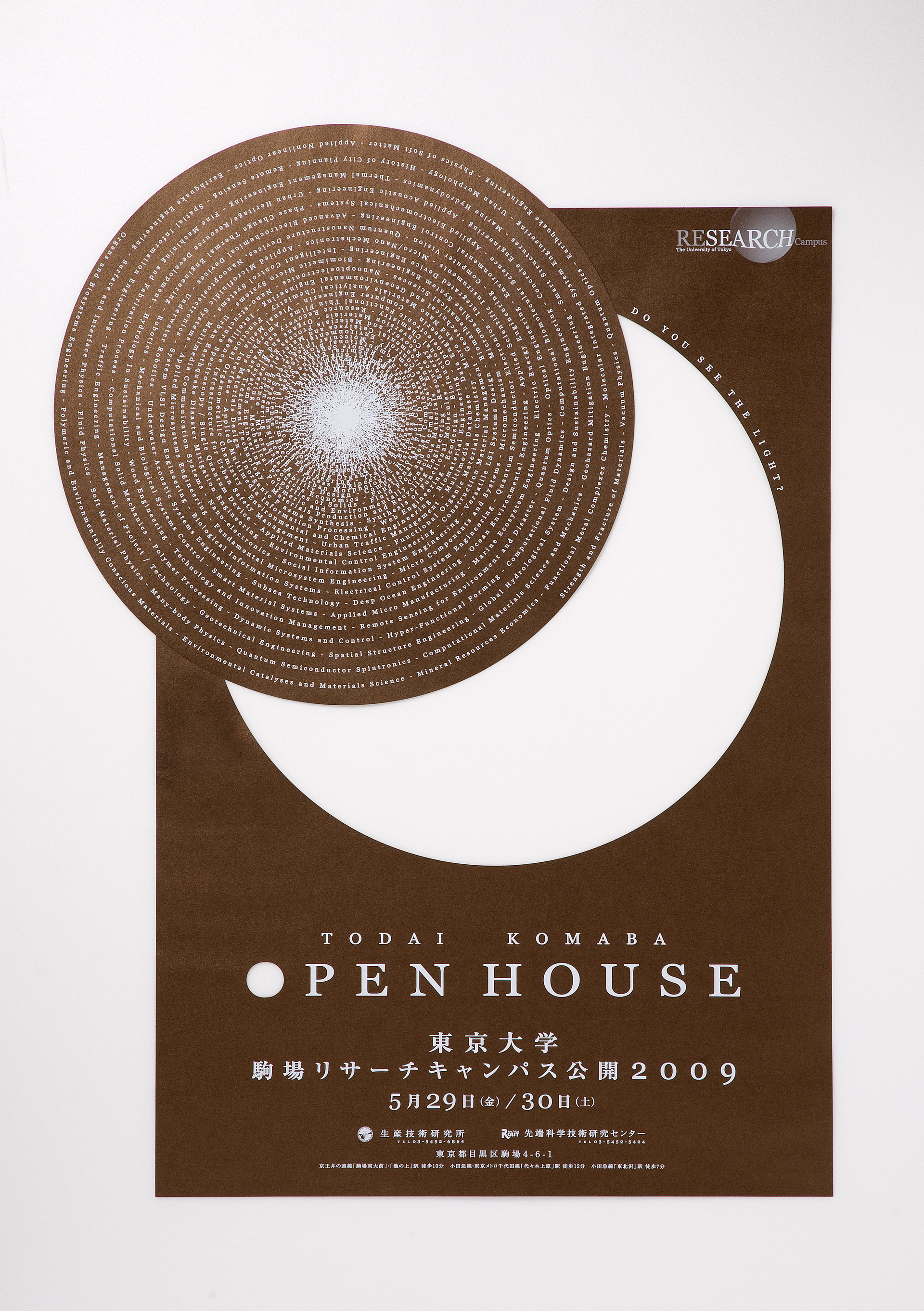
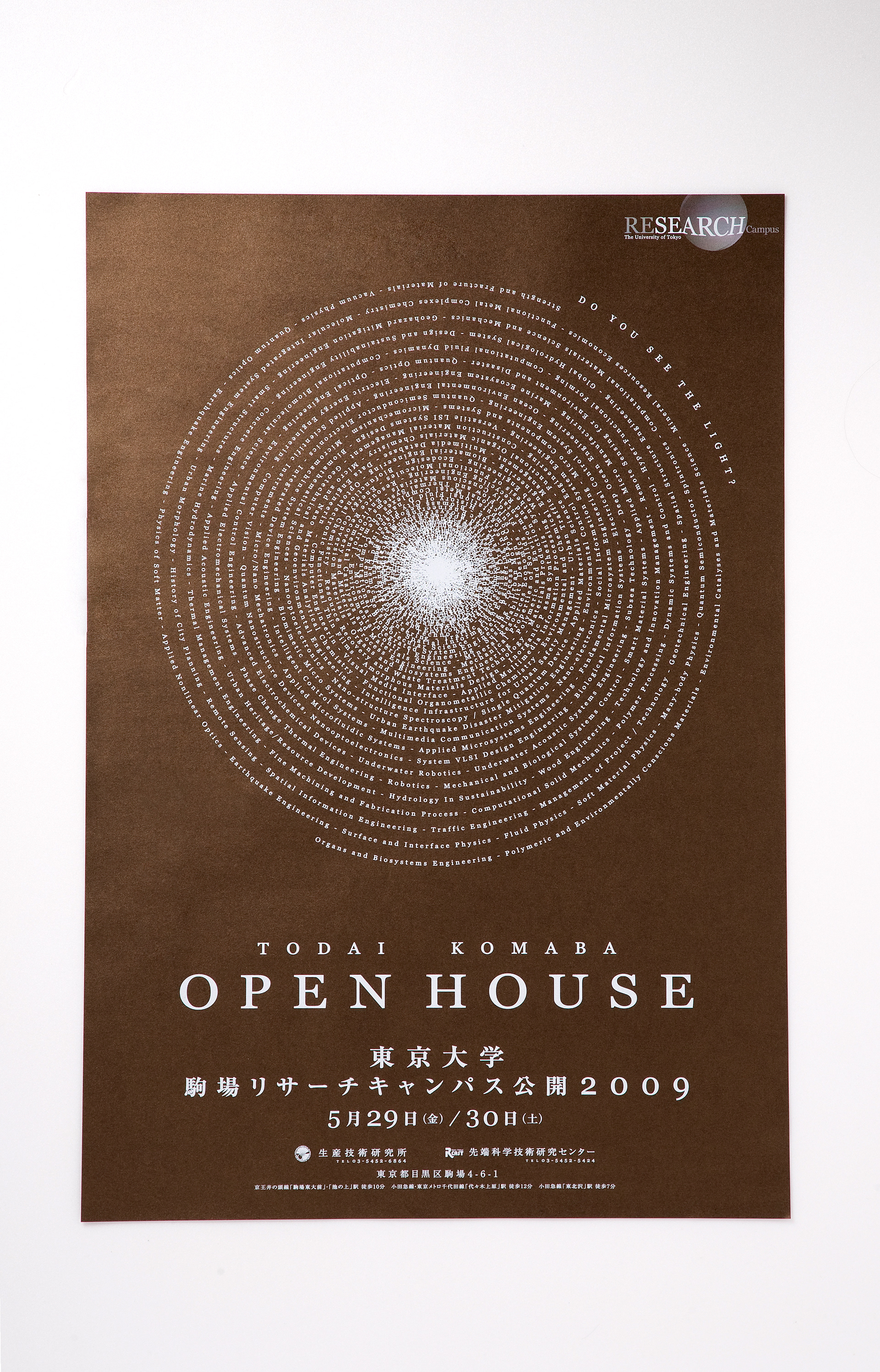

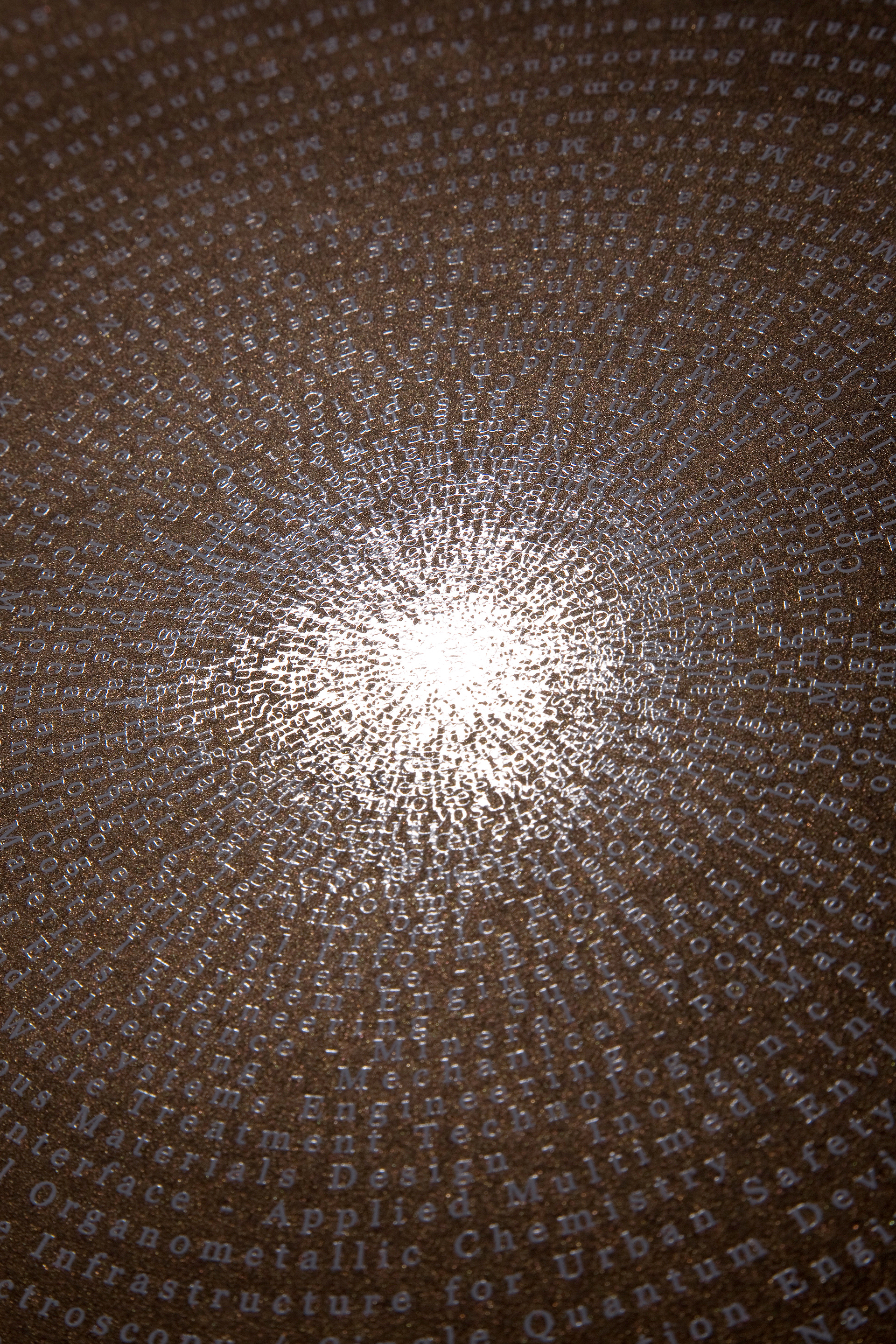
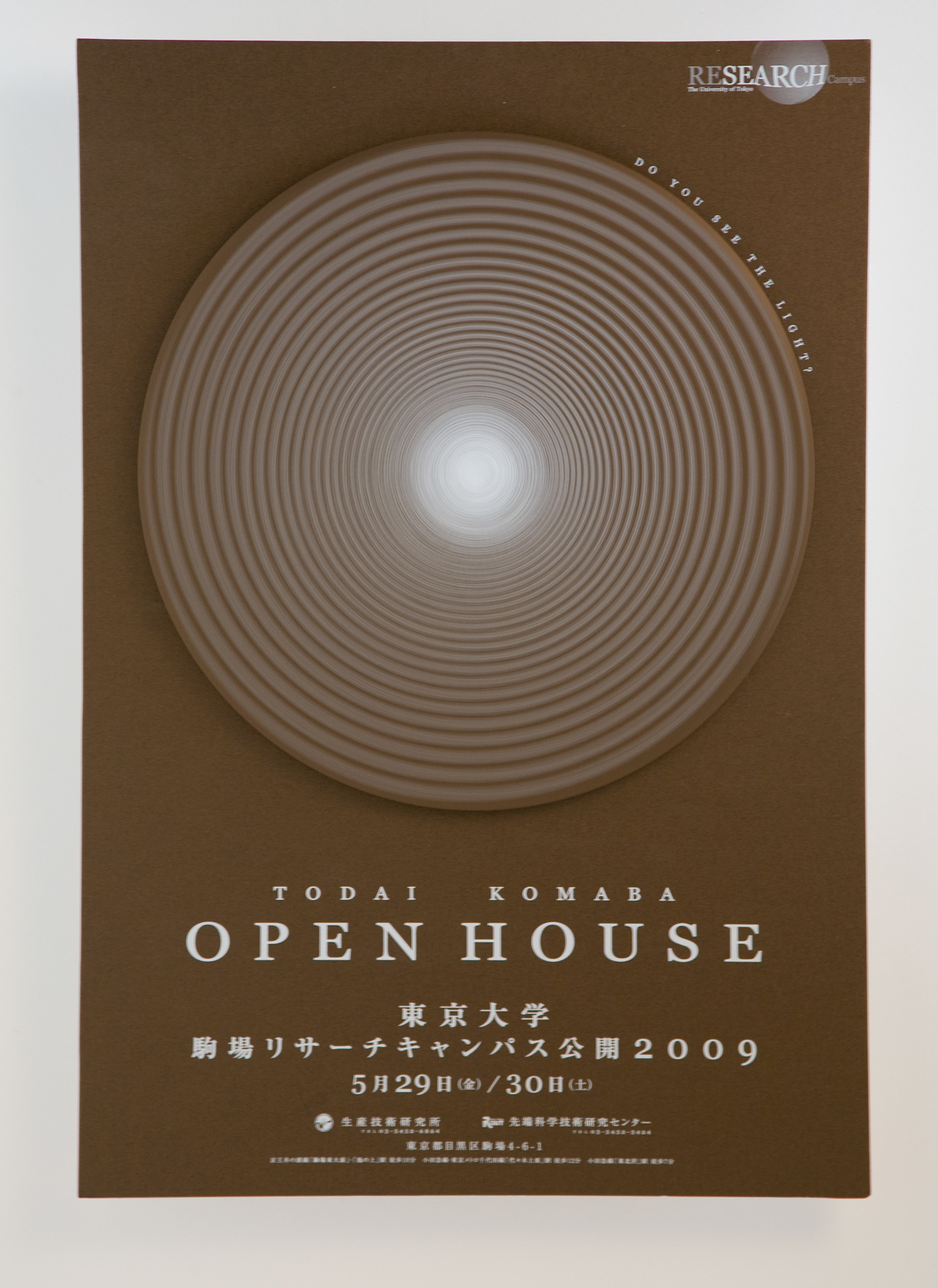
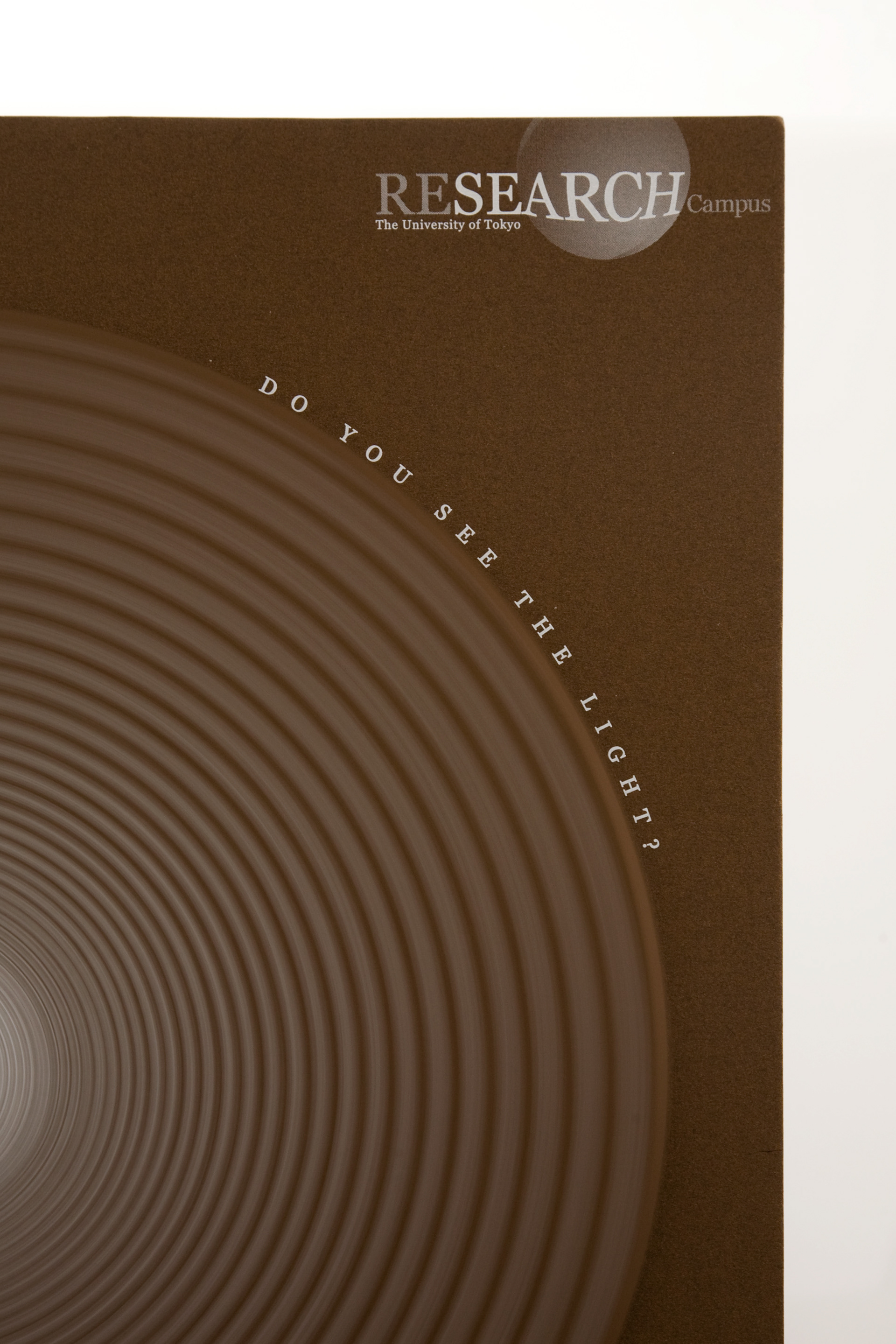
will:
Established an image as a unique and creative research institution.
ユニークで創造的な研究機関としてのイメージを確立。
In 2016, significant projects such as design lab "RCA-IIS Tokyo Design Lab" was produced in collaboration between RCA (Royal College of Art) of the UK with IIS (Institute of Industrial Science) of Japan. Komaba Research Campus now has a well-established image as a state-of-the-art and unique research facility. There is nothing more gratifying than contributing through public relations and succeeding in fostering such an image. For the next three years, just after the establishment of NOSIGNER, we have been involved in a series of design directions that have focused on communicating advanced technology research. We were able to realize the possibilities and the power graphic design truly has. We remember these critical projects that nurtured aspects of NOSIGNER's graphic design.
2016年に、生産研が英・RCA(ロイヤル・カレッジ・オブ・アート)と共同で立ち上げたデザインラボ「RCA-IIS Tokyo Design Lab」などの活動に象徴されるように、いまや駒場リサーチキャンパスには、最先端かつユニークな取り組みを行う研究施設としてのイメージが定着しています。こうしたイメージを醸成することに成功した広報戦略に私たちが少しでも貢献できていたとしたら、これほどうれしいことはありません。また、NOSIGNERが活動を始めて間もない時期に3年間、先端技術研究をわかりやすく伝えることが常に問われた一連のデザインディレクションに携われたことで、私たちは改めてグラフィックデザインが持つ機能や可能性に気付くことができました。NOSIGNERのグラフィックデザイナーとしての側面を育んでくれたこれらの仕事は、私たちにとっても非常に重要なプロジェクトとして記憶されています。
what:
RESEARCH CAMPUS / The University of Tokyo
when:
2009
2009
where:
Tokyo, Japan
who:
Art Direction
NOSIGNER (Eisuke Tachikawa)
Graphic Design
NOSIGNER (Eisuke Tachikawa)
Client
University of Tokyo
who:
Art Direction
NOSIGNER (Eisuke Tachikawa)
Graphic Design
NOSIGNER (Eisuke Tachikawa)
Client
University of Tokyo
